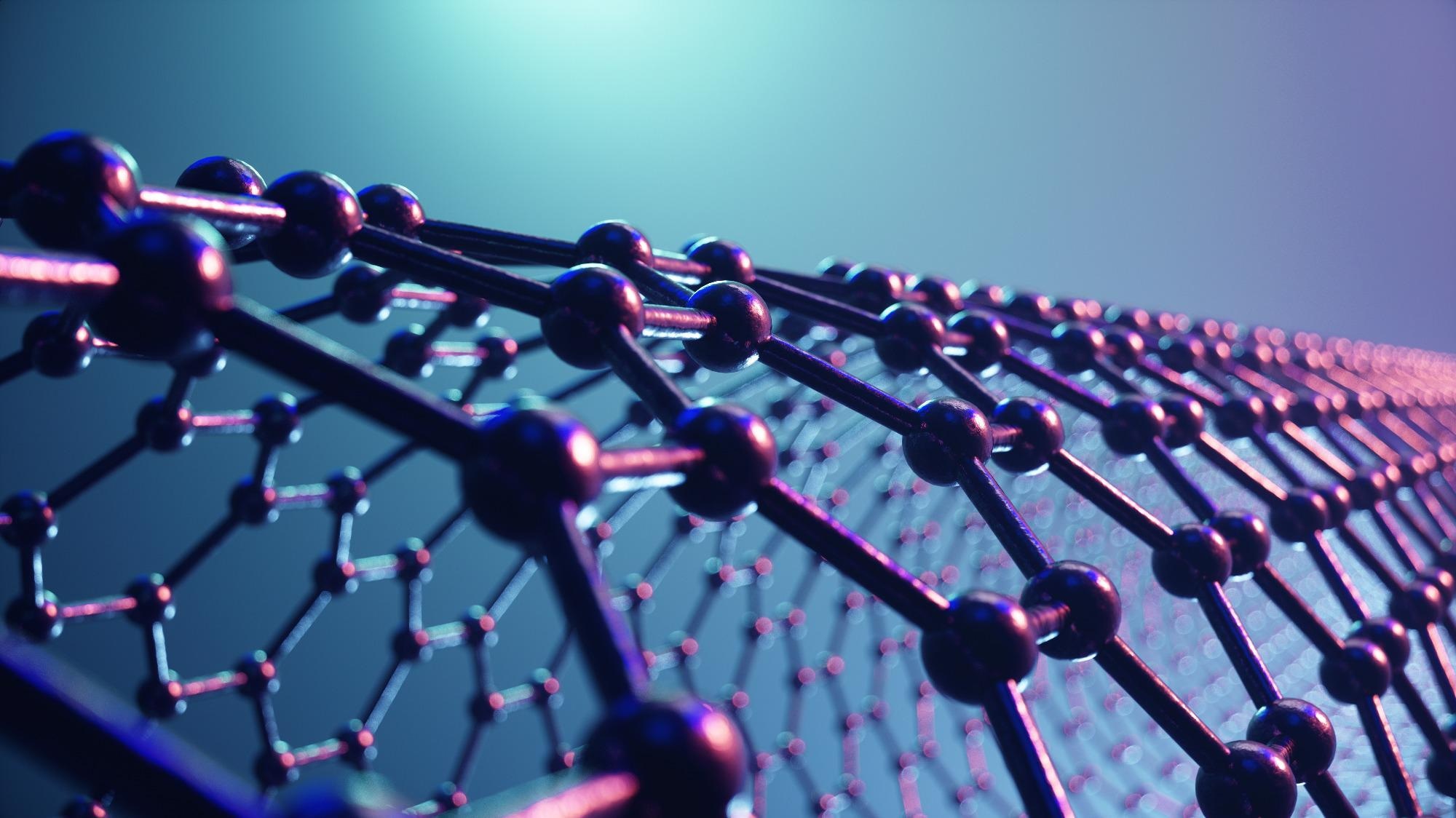Mar 23 2021

Image Credit: Rost9/shutterstock.com
Graphene, a new impressive material, has been described as “the wonder material” due to the remarkable properties it exhibits.
This material attracted extensive attention when its discoverers were awarded the Nobel Prize in physics in 2010. Graphene is the thinnest material in the world since it is only one atom layer thick.
In his thesis, Vesa-Matti Hiltunen demonstrated that graphene “forged” by using laser light. This makes highly stiff three-dimensional structures out of graphene, which could possibly be utilized to make quicker and more precise mechanical devices.
Graphene exhibits various brilliant properties, like mechanical strength, transparency, and electric conductivity. As a result of such properties, graphene has been projected for use in numerous applications, such as energy storage, communication technology, or sensors.
While doing his PhD, Vesa-Matti Hiltunen, MSc, studied how the properties and shape of graphene can be changed by subjecting it to very brief but strong laser pulses. The laser pulses can usually help shape completely two-dimensional graphene into three-dimensional structures.
We call this method optical forging, since it resembles how flat metal sheet can be forged into three-dimensional shapes with a hammer. Structures that are made using optical forging are hundreds of times higher than the thickness of graphene, but still so small that they fit easily, for example, on a hair.
Vesa-Matti Hiltunen, Faculty of Mathematics and Science, Department of Physics, University of Jyväskylä
Laser Light Stiffens Graphene
For instance, devices that can be developed from graphene are various sensors that function by mechanical vibration. Optical forging was found to harden graphene such that it does not bend very easily.
This observation is intriguing because the increase in bending stiffness also elevates the vibrational frequency of graphene. At the same time, increased frequency can enhance accuracy and speed of the devices that are developed from it.
Using optical forging we were able to create structures that are up to 10 000 times stiffer than unmodified graphene. This is record breaking for a material as thin as this.
Vesa-Matti Hiltunen, Faculty of Mathematics and Science, Department of Physics, University of Jyväskylä
Shape is an Outcome of Atomic-Scale Changes
As part of the study, it was found that optical forging results in lattice defects in graphene, that is, the structure of graphene falls apart.
Disintegration of graphene begins from random points. Long-time exposure of graphene to the laser light leads to the conversion of dot-like defects into cracks or line defects. The defects result in the local expansion of graphene, which makes it swell up to three-dimensional shapes.
The research gave plenty of insight into how shape of graphene and its properties can be altered. A great strength of the method is that in order to modify graphene, no complex processes or chemical treatments are needed. Laser light is all that is needed.
Vesa-Matti Hiltunen, Faculty of Mathematics and Science, Department of Physics, University of Jyväskylä
This PhD study was financially supported by Finnish Cultural Foundation.